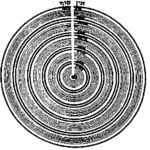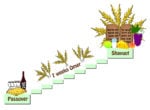Sarah in a State of Superposition
And it came to pass, when he was come near to enter into Egypt, that he said unto Sarai his wife: “Behold now, I know
And it came to pass, when he was come near to enter into Egypt, that he said unto Sarai his wife: “Behold now, I know

Sweeping Infinities Under the Rug—or Renormalization Having dealt with internal contradictions in the previous section (see Physics of Tzimtzum I — The Quantum Leap and

In the previous post “Physics of Tzimtzum I—The Quantum Leap”, we gave a general overview of the mystical doctrine of tzimtzum—the cornerstone of Lurianic Kabbalah.

Introduction “In the beginning G‑d created the heavens and the earth.” (Genesis 1:1) “In the beginning G‑d created the heavens and the earth,” the Torah

There is a Biblical Commandment to count the days between the Passover and Shavuot, the “Feast of Weeks” (a.k.a. Pentecost). We start counting on the

As we discussed in the earlier post, The Tree of Knowledge as a Metaphor for Superposition of States and Heisenberg’s Uncertainty Principle, the Heisenberg uncertainty
And these are the years of the life of Ishmael: one hundred years and thirty years and seven years (Gen. 25,17) You might say the